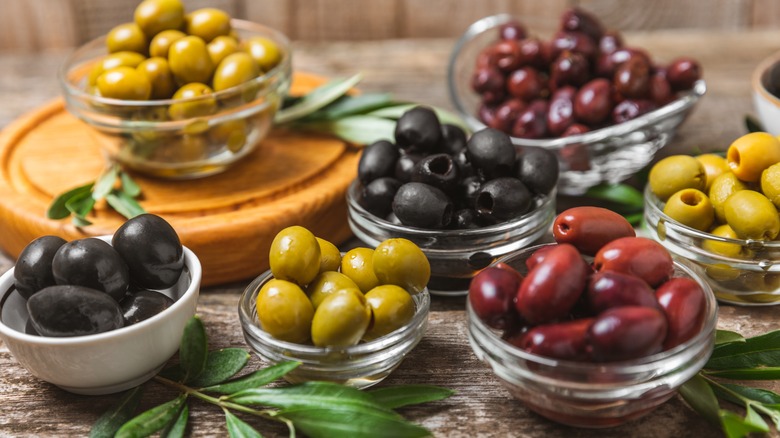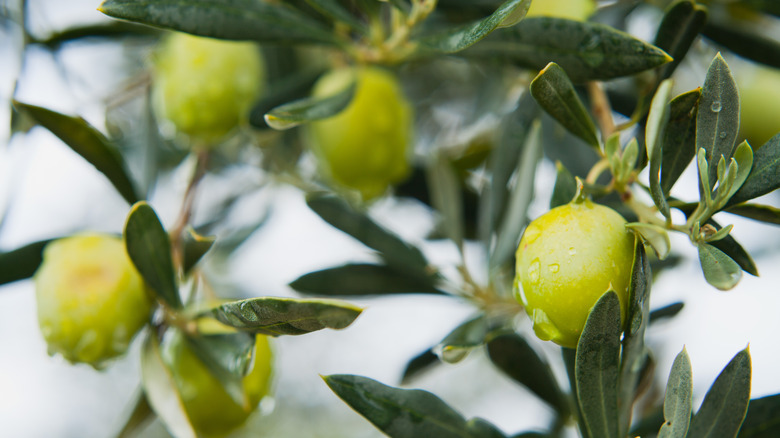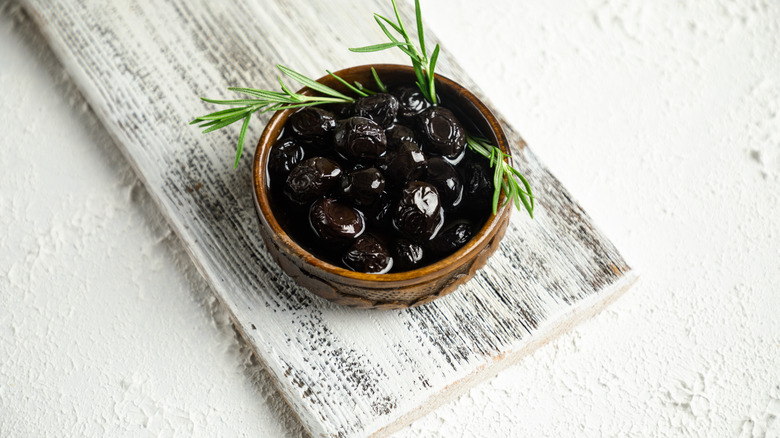The Best Varieties To Use For Home-Canned Olives
Whether you're lucky enough to have an olive tree on your property or have easy access to an abundance of fresh varieties, home-canning olives is a great pursuit. And the good news is that most olive varieties work well with the canning process. Choosing the best varieties for canning is actually a matter of taste, as you must select a variety that's suited to your preferred style.
Kalamata olives are a type of Greek olive known for their earthy flavor, which is made more enjoyable thanks to the subtle notes of fruitiness throughout. Kalamata olives are ideal for water curing, which entails a surprisingly easy canning process. Just add olives to glass jars, then pour in some cold water. Keep in mind that the olives must be fully submerged in cold water, and water must be changed on a daily basis to deter bacterial growth. After about four weeks, transfer the olives to a brine solution.
Best variety for Spanish-style olives
Manzanilla olives hail from Spain and are very identifiable thanks to their characteristic green shade. Manzanillas are much loved for their nutty flavor profile, which is punctuated by a hint of smokiness. When canning manzanilla olives, brine curing is the preferred method of preservation. The key is to make a solid brining solution to preserve the fruit while also imbuing them with a more complex flavor.
Brining solutions typically consist of water, salt, and vinegar. Salt is a powerful preservative, as it helps prevent the growth of harmful bacteria that could be the source of foodborne illness. Vinegar serves the same purpose thanks to its high acidity level, which makes for an inhospitable environment for bacteria. Unlike water curing, the brining process typically takes many months to complete.
However, the brining solution must be changed every month or so to ensure that the manzanilla olives properly ferment. Also, if you want to add seasoning to the olives, you should do so well into the fermentation process. Adding seasoning too soon can eliminate some of the rich olive flavors that manzanillas offer.
Oil curing black olives
When it comes to oil-curing olives, the mission variety is your best bet. Mission olives have a very subtle acidity, which is perfectly complemented by the fruit's grassy notes. Before incorporating the oil, black olives are placed in a hanging sack, along with an ample portion of salt. Olives should rest in the sack for about six weeks, though they should be evaluated regularly to ensure they're completely coated in salt.
At this point, the mission olives will be intensely briny, which is a flavor that many people enjoy. The oil will temper this flavor, however, and ensure your homemade olives are suited to every palate. You can either spread out the mission olives and drizzle them with oil or place the olives in a jar and fill it with oil. In either case, let the olives rest in the oil for about one day to get the full effect. With so many great olive varieties to choose from, you're free to experiment with many canning techniques.


